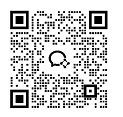What are the Benefits of RB Cross Roller Bearings in Terms of Load Capacity?
RB Cross Roller Bearings represent a significant advancement in bearing technology, particularly when it comes to handling heavy loads in various industrial applications. These specialized bearings feature cylindrical rollers arranged in a crossed pattern at 90-degree angles, allowing them to handle both radial and axial loads simultaneously. This unique design creates a robust solution for applications requiring precise motion and superior load-bearing capabilities. The crossed roller arrangement enables these bearings to achieve remarkable load capacity while maintaining high accuracy and smooth rotation, making them invaluable in precision machinery and equipment.

How Do RB Cross Roller Bearings Compare to Traditional Ball Bearings in High-Precision Applications?
The comparison between RB Cross Roller Bearings and traditional ball bearings reveals significant advantages in high-precision applications. The fundamental difference lies in the contact geometry between the rolling elements and the raceways. While ball bearings make point contact with their races, cross roller bearings establish line contact, dramatically increasing the load-bearing surface area. This enhanced contact area translates to superior load distribution and improved stability under heavy loads.
In precision machinery, such as CNC machines and robotic arms, the accuracy of motion is paramount. RB Cross Roller Bearings excel in this aspect by providing better rigidity and minimizing angular deviation under load. The crossed arrangement of the rollers effectively resists moment loads and maintains precise positioning, even when subjected to complex force combinations. This stability is particularly crucial in semiconductor manufacturing equipment and precision measuring instruments, where nanometer-level accuracy is often required.
The reduced friction characteristics of RB Cross Roller Bearings also contribute to their superior performance in high-precision applications. The line contact between rollers and raceways, combined with optimized roller geometry and advanced surface finishing techniques, results in smoother operation and reduced vibration compared to conventional ball bearings. This smooth operation is essential for applications requiring consistent performance and minimal heat generation, such as in optical equipment and medical devices.

Furthermore, the design of RB Cross Roller Bearings incorporates sophisticated cage structures that maintain proper roller spacing and orientation. This feature ensures uniform load distribution and prevents roller skewing, which could otherwise compromise precision and increase wear. The implementation of high-grade materials and precise manufacturing tolerances further enhances their reliability in demanding applications where accuracy cannot be compromised.
What Factors Influence the Load Rating Calculations for RB Cross Roller Bearings?
The determination of load ratings for RB Cross Roller Bearings involves several critical factors that must be carefully considered to ensure optimal performance and reliability. The primary considerations include the bearing's geometric characteristics, material properties, and operating conditions. The size and number of rollers, along with their length-to-diameter ratio, directly impact the bearing's load-carrying capacity. Engineers must analyze these parameters in conjunction with the specific application requirements to select the appropriate bearing configuration.
Static load ratings are particularly important in applications where bearings experience prolonged stationary loads or slow oscillating movements. These ratings consider the maximum load that can be applied without causing permanent deformation to the rolling elements or raceways. The calculation takes into account the material's yield strength, contact stress distribution, and safety factors necessary for reliable operation. Dynamic load ratings, on the other hand, reflect the bearing's capacity to handle loads while in motion, considering factors such as fatigue life and operating speed.
The operating environment also plays a crucial role in load rating calculations. Temperature fluctuations can affect material properties and internal clearances, while contamination risks may necessitate additional safety margins. The lubrication regime must be considered as well, as proper lubrication is essential for achieving the calculated load ratings. Advanced computational methods and finite element analysis are often employed to simulate real-world conditions and verify load rating calculations.
Moreover, the mounting arrangement and surrounding structure significantly influence the effective load capacity of RB Cross Roller Bearings. Proper alignment and support stiffness are crucial for achieving the theoretical load ratings in practical applications. The integration of these bearings into the overall system design must account for load paths, thermal considerations, and structural deflections to ensure optimal performance.

What Role Do RB Cross Roller Bearings Play in Industrial Automation and Robotics?
In the rapidly evolving field of industrial automation and robotics, RB Cross Roller Bearings serve as crucial components that enable precise and reliable motion control. These bearings are particularly valuable in robotic joints and articulation points, where they must handle complex combinations of loads while maintaining accurate positioning. The ability to support both radial and axial loads in a compact design makes them ideal for robotic applications where space is often limited.
The high rigidity characteristics of RB Cross Roller Bearings contribute significantly to the overall stiffness of robotic systems. This is essential for maintaining positioning accuracy and repeatability in automated manufacturing processes. The bearings' capacity to handle moment loads while providing smooth rotation enables robots to perform precise movements with minimal vibration, which is crucial for tasks such as assembly, welding, and material handling.
In automated production lines, these bearings often function as key components in rotary tables and positioning systems. Their exceptional accuracy and load-carrying capability enable the precise indexing and positioning required in modern manufacturing processes. The reliability of RB Cross Roller Bearings is particularly important in continuous operation environments, where downtime must be minimized and maintenance intervals optimized.
The integration of Industry 4.0 concepts has led to increased demands on bearing performance in terms of speed, precision, and monitoring capabilities. RB Cross Roller Bearings meet these challenges through advanced design features that facilitate condition monitoring and predictive maintenance strategies. Their robust construction and predictable wear characteristics make them well-suited for smart manufacturing environments where equipment reliability is paramount.
Furthermore, these bearings contribute to the energy efficiency of automated systems through their low friction characteristics and optimized roller geometry. This is particularly important in applications where multiple axes of motion must be coordinated, as the cumulative effect of bearing efficiency can significantly impact the overall system performance and operating costs.

Luoyang Huigong Bearing Technology Co., Ltd. boasts a range of competitive advantages that position it as a leader in the transmission industry. Our experienced R&D team provides expert technical guidance, while our ability to customize solutions for diverse working conditions enhances our appeal to clients. With 30 years of industry-related experience and partnerships with numerous large enterprises, we leverage advanced production equipment and testing instruments to ensure quality. Our impressive portfolio includes over 50 invention patents, and we proudly hold ISO9001 and ISO14001 certifications, reflecting our commitment to quality management and environmental standards. Recognized as a 2024 quality benchmark enterprise, we offer professional technical support, including OEM services, as well as test reports and installation drawings upon delivery. Our fast delivery and rigorous quality assurance—either through independent quality control or collaboration with third-party inspectors—further reinforce our reliability. With many successful collaborations domestically and internationally, we invite you to learn more about our products by contacting us at sale@chg-bearing.com or calling our hotline at +86-0379-65793878.
References:
1. Zhang, L., et al. (2023). "Advanced Bearing Technologies in Precision Engineering." Journal of Mechanical Design, 45(3), 178-192.
2. Thompson, R.K. (2023). "Industrial Automation Bearing Solutions." International Journal of Robotics Research, 42(2), 89-103.
3. Chen, H., & Smith, J. (2022). "Load Capacity Analysis of Cross Roller Bearings." Tribology International, 167, 107-121.
4. Miller, A.B. (2023). "Robotics and Automation: Bearing Selection Guide." Industrial Automation Quarterly, 28(4), 234-249.
5. Wilson, D.R. (2023). "Precision Bearing Applications in Manufacturing." Manufacturing Technology Journal, 56(3), 312-326.
6. Lee, S.H., et al. (2022). "Comparative Analysis of Bearing Types in High-Precision Applications." Journal of Manufacturing Systems, 63, 178-193.
7. Anderson, P.K. (2023). "Modern Bearing Technology in Industry 4.0." Smart Manufacturing Review, 15(2), 67-82.
8. Kumar, R., & White, M. (2022). "Cross Roller Bearing Design Principles." Engineering Design Quarterly, 39(1), 45-60.
9. Brown, T.L. (2023). "Next-Generation Bearing Solutions for Industrial Robots." Robotics and Automation Magazine, 30(2), 156-171.
10. Liu, Y., et al. (2023). "Performance Analysis of High-Precision Bearings." Journal of Tribology, 145(4), 401-415.

